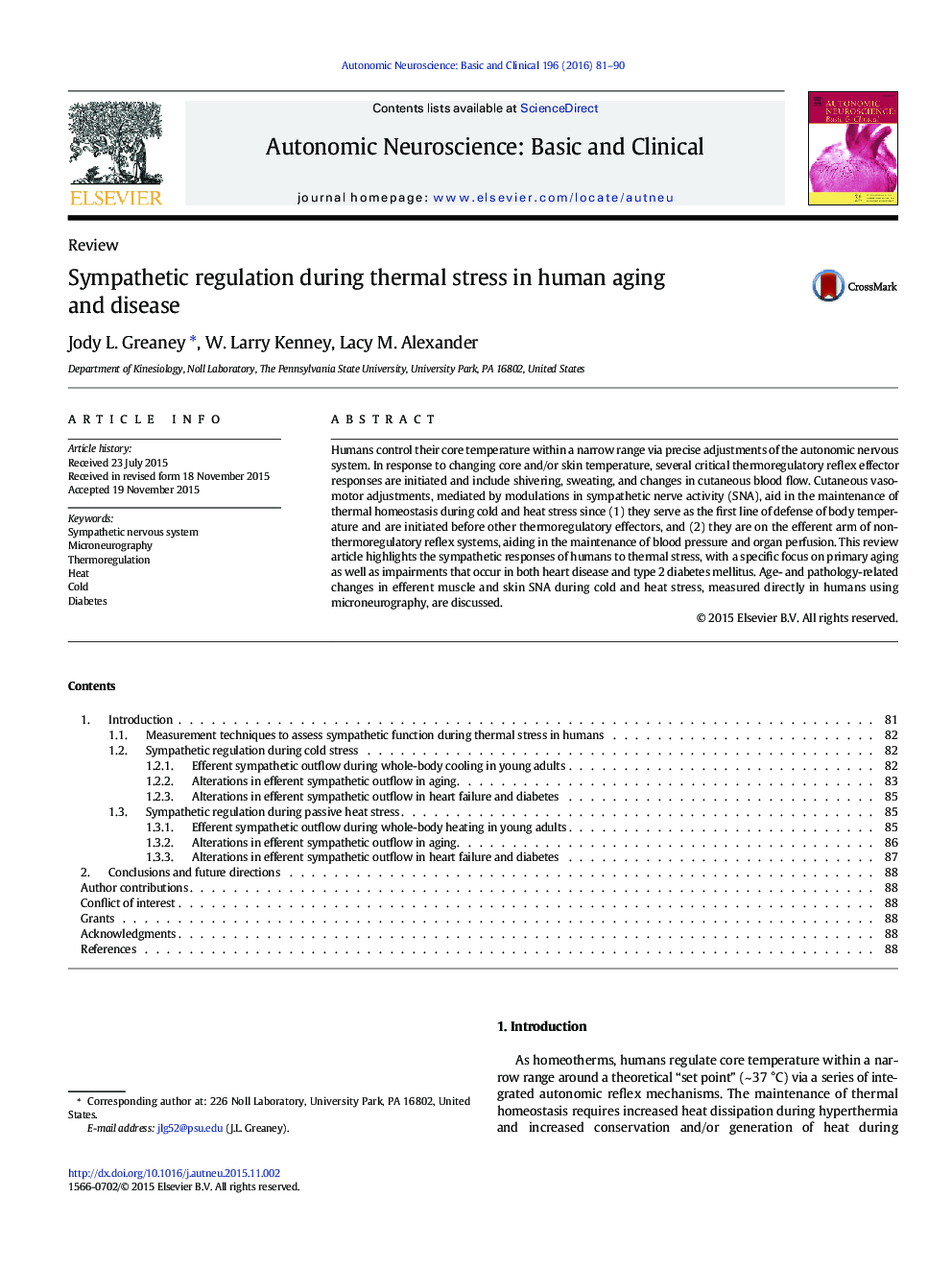| Article ID | Journal | Published Year | Pages | File Type |
|---|---|---|---|---|
| 6003899 | Autonomic Neuroscience | 2016 | 10 Pages |
â¢The integrated cardiovascular responses to thermal stress are mediated by the sympathetic nervous system.â¢Sympathetic responses to thermal stress are altered in human aging, increasing risk of cold- and heat-related mortality.â¢Heart failure and diabetes are clinical pathologies also associated with impaired sympathetic neural regulation during thermal stress.
Humans control their core temperature within a narrow range via precise adjustments of the autonomic nervous system. In response to changing core and/or skin temperature, several critical thermoregulatory reflex effector responses are initiated and include shivering, sweating, and changes in cutaneous blood flow. Cutaneous vasomotor adjustments, mediated by modulations in sympathetic nerve activity (SNA), aid in the maintenance of thermal homeostasis during cold and heat stress since (1) they serve as the first line of defense of body temperature and are initiated before other thermoregulatory effectors, and (2) they are on the efferent arm of non-thermoregulatory reflex systems, aiding in the maintenance of blood pressure and organ perfusion. This review article highlights the sympathetic responses of humans to thermal stress, with a specific focus on primary aging as well as impairments that occur in both heart disease and type 2 diabetes mellitus. Age- and pathology-related changes in efferent muscle and skin SNA during cold and heat stress, measured directly in humans using microneurography, are discussed.
